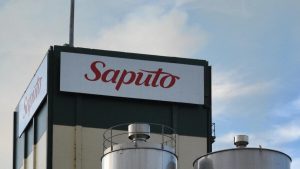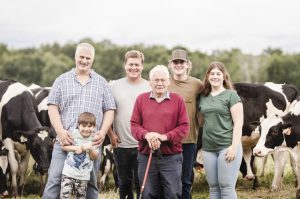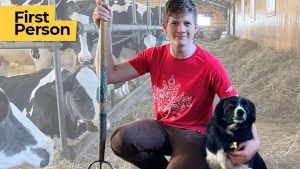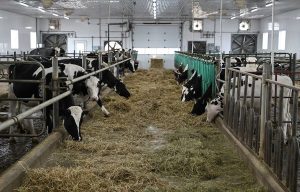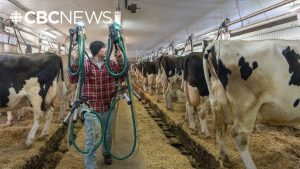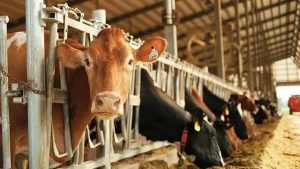
Henry Oosterhof and his brother and son run a 200-hectare dairy farm north of Brockville.
In the past decade or so, the family have modernized their dairy operation, adding a pair of robotic milking machines to improve milk production. To support the family’s dairy herd, they plant about 80 hectares of hay and more than 50 hectares of corn, which provides up to 450 kilograms of feed corn per day.
Accounting for about 20 per cent of the province’s agricultural industry, the dairy sector is the largest single farming sector in Ontario, contributes to more than 73,000 people and is worth about $7 billion to Ontario’s economy.
Agriculture and agri-food supports more than 860,400 jobs and contributes more than $47 billion to the province’s economy.
Modernizing the province’s processors — the facilities that turn milk trucked from diary farms into products for store shelves — is needed to keep the industry working efficiently, he said.
“We rely on processors to buy our milk to help, you know, and that’s all fine,” Oosterhof said.
“But the processing industry, a lot of their investments were 20, 30 years ago and technology has changed a lot,” Oosterhof said. “And there is a real need in Ontario for the processing industry to modernize and to maybe build some new processing units that are closer to dairy farmers.
“If there was any issue that’s huge for us, the industry right now, we would have encouraged any future government to work with the processors to help modernize the infrastructure that’s out there to process our milk,” he added.
“What was built 40 years ago, there was a lot more farmers spread out across Ontario, and now we’ve all concentrated, our herds have got a little bigger. Instead of me farming 25 cows by myself, three of us are living here with milking 110, 120 cows.”
Milk is picked up from dairy farms a few times a week. Once it leaves the farm, the milk is most often delivered to the closest processor, but occasionally it goes farther afield.
“By centralizing, you know, working with the bit processors to find out where they could build a new unit, it would help reduce mileage on the road, reduce greenhouse gas emissions,” Oosterhof said.
“We know that sometimes milk has to go from Woodstock to here, to Winchester,” he said. “And sometimes we have to move milk from here to Woodstock because we’re getting milk from Quebec. There’s a lot of Highway 401 traffic.”
The closure of agriculture programs at Kemptville College about seven years ago has also left a gap in the availability of training for new agriculture employees.
“We would be anxious for the government to improve the educational environment for future farmers,” he said. “We need more agriculture students. There are a lot of agriculture jobs. There is still a need to train post-secondary students for agriculture, to get relevant experience. Our training facilities may have to be improved a bit, too.”
The need to modernize dairy processors and increase farmer education are echoed somewhat by the priorities set out by directors of the Ontario Federation of Agriculture, who called for investment in rural Ontario, particularly in roads, bridges, hospital and schools; opportunities and careers for young people, including solutions for what the OFA said are 29,000 job vacancies in the agriculture sector; and relief from high prices, including fuel costs, food security and supply chain resiliency and preserving farmland.




